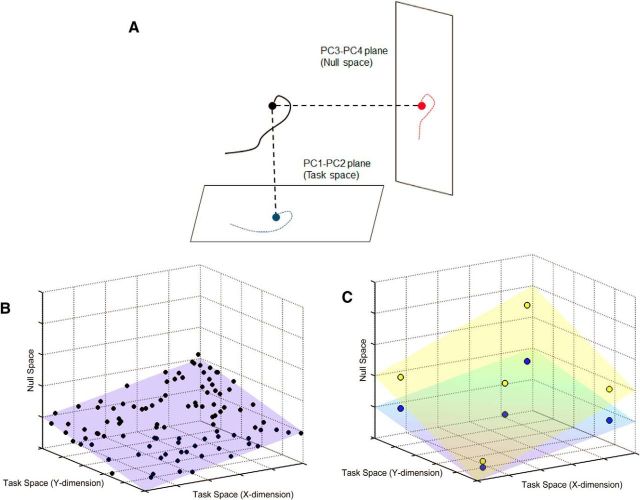Figure 3.
Representation of computation of exploration index, planarity, and null space dispersion. A, For the exploration index, the hand posture was projected on to two planes: the task space (indicated in blue), and the null space (indicated in red). The path length was calculated separately in each plane and the exploration index was computed as ratio of the null space path length to the task space path length. B, C, The schematic represents a simplified version with a 2D task space (i.e., the floor of the graph) and a 1D null space (the height dimension). B, For planarity, we used all the hand postures in the corresponding block (shown by the black circles) and computed the VAF by the first two PCs (i.e., represented by the best fitting plane in blue). C, For the null space dispersion, we used only the hand postures during target capture (five targets are shown for simplicity) and we computed the ratio of the variance along the null space to the variance along the task space. Two possible strategies for achieving the same five targets in the task plane are shown in blue and yellow. In this scenario, the null space dispersion would be higher for a strategy represented by the yellow plane compared with the strategy represented by the blue plane.

